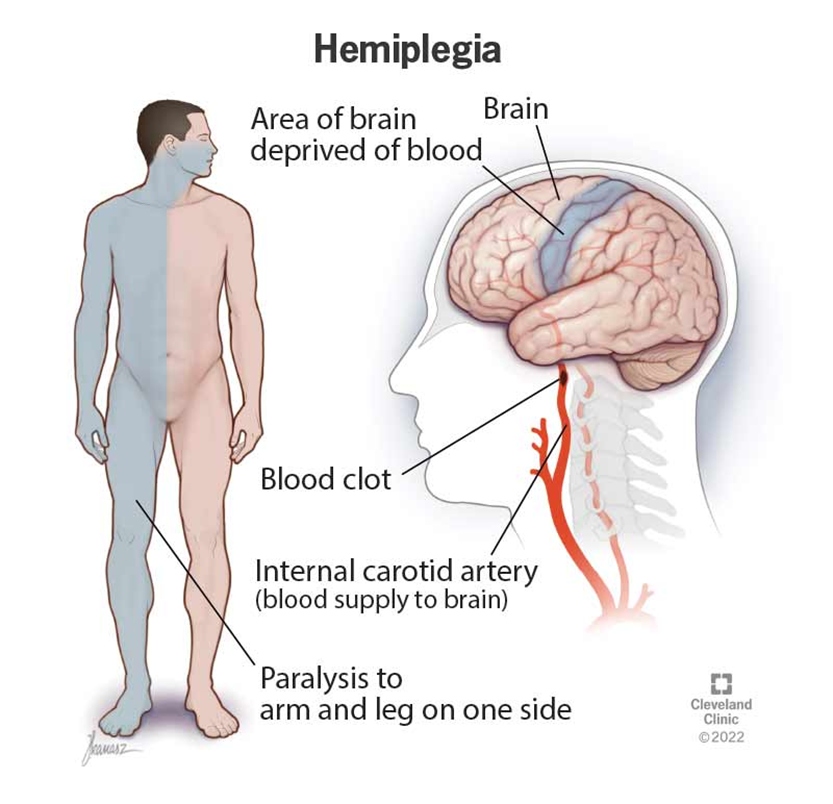A 6-year-old with a fractured femur is in Russell’s traction. Surgical intervention to correct the fracture is scheduled for the morning. Nursing actions should include which action?
Releasing traction every hour to perform skin care.
Releasing traction once every 8 hours to check circulation.
Maintaining continuous traction until 1 hour before the scheduled surgery.
Maintaining continuous traction and checking the position of traction.
The Correct Answer is D
Choice A reason:
Releasing traction every hour to perform skin care: Releasing traction every hour is not recommended as it can disrupt the alignment and healing process of the fractured femur. Skin care is important, but it should be performed without compromising the traction setup.
Choice B Reason:
Releasing traction once every 8 hours to check circulation: While checking circulation is crucial, releasing traction every 8 hours is not necessary and can interfere with the therapeutic benefits of traction. Circulation can be monitored without releasing the traction.
Choice C Reason:
Maintaining continuous traction until 1 hour before the scheduled surgery: Continuous traction is essential to maintain the alignment of the fractured femur. However, there is no need to release traction 1 hour before surgery unless specifically instructed by the surgical team.
Choice D Reason:
Maintaining continuous traction and checking the position of traction: This is the most appropriate action. Continuous traction ensures proper alignment and healing of the fractured femur. Regularly checking the position of traction helps prevent complications and ensures the effectiveness of the treatment.

Nursing Test Bank
Naxlex Comprehensive Predictor Exams
Related Questions
Correct Answer is ["B","C","D"]
Explanation
Choice A reason:
Assessing skin turgor underneath the cast is not feasible because the cast covers the skin, making it difficult to evaluate turgor directly. Skin turgor is typically assessed to determine hydration status, but it is not a primary concern when monitoring a child with a cast. The focus should be on assessing for signs of complications such as swelling, circulation issues, and pain.
Choice B reason:
Skin temperature is an important assessment when a child has a cast. Changes in skin temperature, such as increased warmth, can indicate infection or inflammation, while a cooler temperature may suggest compromised circulation. Regularly checking the skin temperature around the cast can help identify potential complications early.
Choice C reason:
Assessing pulses is crucial when a child has a cast. Checking the pulses distal to the cast (e.g., in the fingers or toes) helps ensure that there is adequate blood flow to the extremity. Diminished or absent pulses can indicate compromised circulation, which requires immediate medical attention to prevent tissue damage.
Choice D reason:
Pain assessment is essential for a child with a cast. Pain can be an indicator of complications such as pressure sores, infection, or compartment syndrome. Monitoring the child’s pain levels and addressing any complaints of pain promptly is important for their comfort and to prevent further issues.
Correct Answer is B
Explanation
Choice A reason:
Bacteriuria, or the presence of bacteria in the urine, is not typically associated with acute glomerulonephritis. Acute glomerulonephritis is primarily an inflammatory condition affecting the glomeruli of the kidneys, and it does not usually involve bacterial infection. Increased specific gravity can occur due to concentrated urine, but bacteriuria is not a characteristic finding.
Choice B reason:
Hematuria, or blood in the urine, and mild to moderate proteinuria are characteristic findings in acute glomerulonephritis. Hematuria occurs due to inflammation and damage to the glomeruli, allowing red blood cells to pass into the urine. Proteinuria results from the increased permeability of the glomerular basement membrane, allowing proteins to leak into the urine. These findings are key indicators of glomerular inflammation and damage.

Choice C reason:
While proteinuria can be present in acute glomerulonephritis, bacteriuria is not a typical finding. The condition is primarily inflammatory rather than infectious, so the presence of bacteria in the urine is not expected. The focus should be on the inflammatory markers such as hematuria and proteinuria.
Choice D reason:
High levels of proteinuria and decreased specific gravity are not typical findings in acute glomerulonephritis. While proteinuria can occur, it is usually mild to moderate rather than high. Specific gravity may be increased due to concentrated urine, but decreased specific gravity is not a characteristic finding of this condition.
Whether you are a student looking to ace your exams or a practicing nurse seeking to enhance your expertise , our nursing education contents will empower you with the confidence and competence to make a difference in the lives of patients and become a respected leader in the healthcare field.
Visit Naxlex, invest in your future and unlock endless possibilities with our unparalleled nursing education contents today
Report Wrong Answer on the Current Question
Do you disagree with the answer? If yes, what is your expected answer? Explain.
Kindly be descriptive with the issue you are facing.
